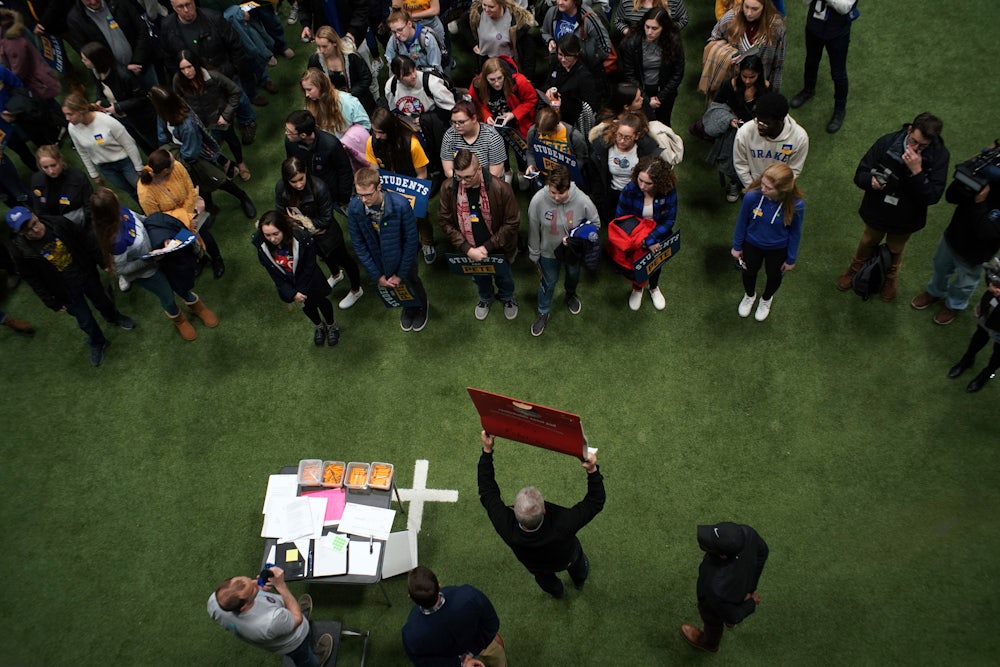Born in 1972, when anti-war crusader George McGovern put Iowa’s caucuses on the map by placing second and transforming himself into a major presidential contender.
Died in 2020, when a technology meltdown left cable anchors and thousands of reporters with nothing to blather about for almost a day as they waited for results to trickle in from more than 1,700 precincts.
In lieu of flowers, those close to the caucuses request that money be donated to pay for counseling sessions for staffers of the Iowa Democratic Party and top aides to the candidates.
Iowa has always been about more than its paltry 41 delegates. It is about momentum or, as a victorious George Bush called it in 1980, “the Big Mo.” The traditional theory was that Iowa tested how much enthusiasm candidates could drum up among party activists, while the venerable New Hampshire primary measured their popularity with a larger universe of voters.
The caucuses were designed with that in mind. Many of their most distinctive features were deliberate choices. To spend two hours at a precinct caucus on a wintry Monday evening demands commitment. There are no shortcuts, no absentee ballots, no early voting. Show up in person or be counted out—even if you work the night shift or are homebound for health reasons. But those twentieth-century rules can feel sharply at odds with the direction of the Democratic Party in the twenty-first. Even before Monday night’s Caucus Crackup, Iowa’s overwhelmingly white electorate threatened its first-in-the-nation status. But equally troubling were all the ways in which the caucuses depressed turnout in a party built around the gospel of maximizing voter participation.
Ironically, under pressure from Bernie Sanders’s backers (who chafed at the results in 2016, when he lost Iowa narrowly to Hillary Clinton), the caucuses have become a model of transparency. The Iowa Democratic Party has agreed to release two numbers: not just the delegate equivalents, which are something like an electoral college in a cornfield, but also the raw votes available for both rounds of balloting. If your favored candidate did not get minimum support of 15 percent in your precinct, you could also caucus for someone else on the second round.
These factors would have made the 2020 count complicated even under the best of circumstances. My best Iowa sources warned me over the weekend that it would be a bumpy ride Monday night. But not even they could have imagined that it would turn out to be a long day’s journey into Tuesday afternoon—and beyond.
The technological failure in reporting the results has obscured the reality that the caucuses themselves appeared to have been better run than in prior years. (Yes, I know this sounds like “the operation was a success, but the patient died.”)
The caucus I attended at Ashland Ridge Elementary School in Ankeny, a fast-growing suburb of Des Moines, went off with clockwork efficiency. Despite the standard refrain that Democrats are in disarray, the 209 caucusgoers in Ankeny-10 applauded warmly for everyone who gave closely clocked one-minute speeches.
One of the wonders of the caucuses is that, since everything is conducted in public, you see the faces of the supporters of each of the candidates. For example, it was telling that the Joe Biden contingent (that hit the 15 percent threshold without a vote to spare) appeared to include almost no one who looked younger than 55. And when Amy Klobuchar fell just three votes shy of qualifying for a delegate from the precinct, a talented organizer for Pete Buttigieg steered about two-thirds of the Klobuchar refugees to his camp on the second round.
After four decades of coming to Iowa for the caucuses, I will be saddened by their likely elimination in 2024. But it will be the sadness of the old giving way to the new—like the closing of a beloved diner whose owner was ready to retire to Florida. As I write these words on a plane heading east toward New Hampshire, I wonder when—if ever—I will be back in Des Moines.
